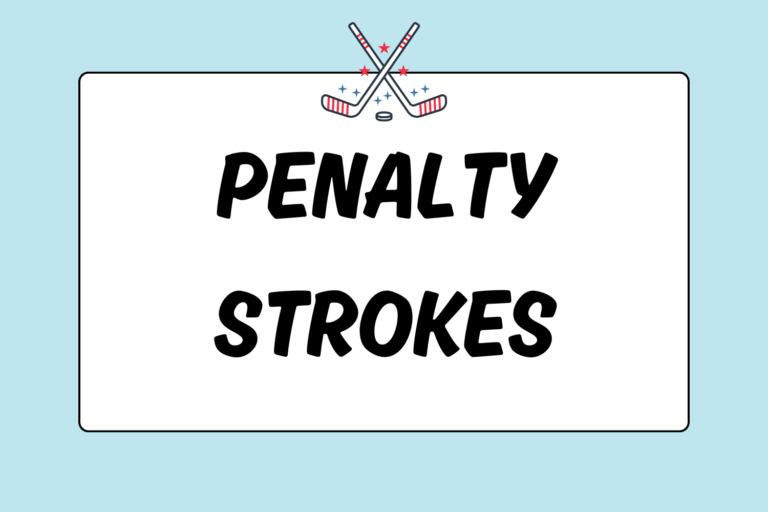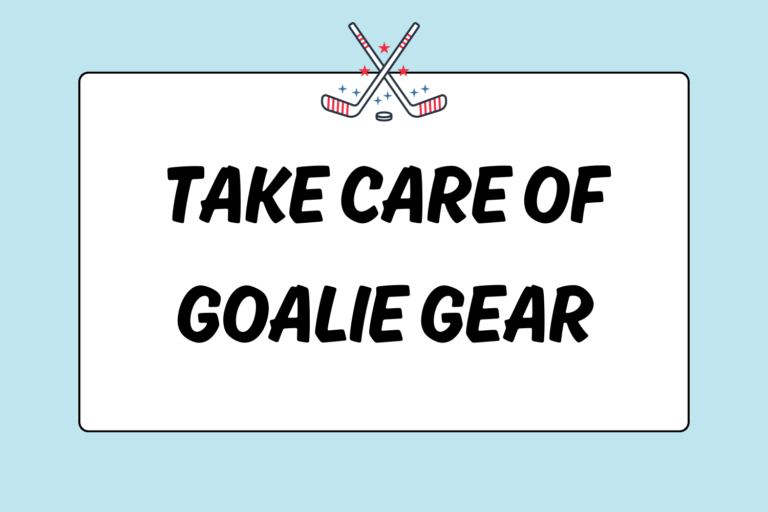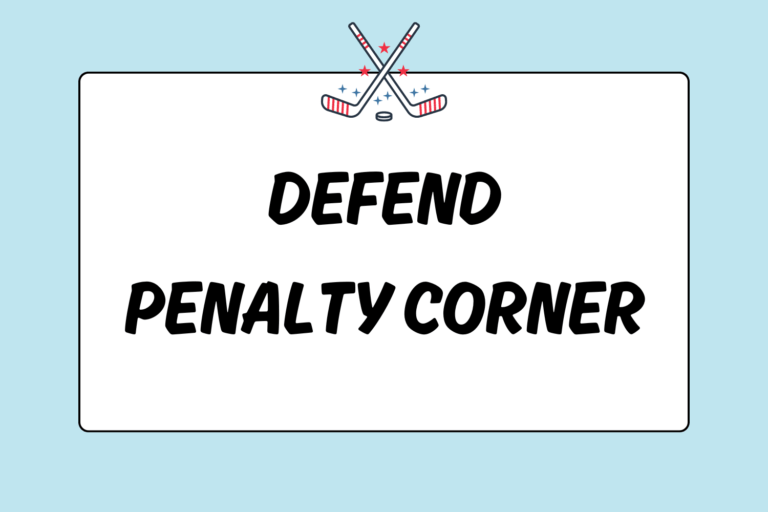The player taking the initial shot on a penalty corner is referred to by many names. Some call her the shooter, others the hitter, or possibly the striker. But no matter the name, this player arguably has the most important job during the play.
For purposes in this guide, this player will be referred to as the shooter. The mission of the penalty corner team is to score goals and the shooter takes the first shot. As the shooter, your job is to score off of the initial hit or execute a set play created by your team. This guide will cover the different types of hits and plays you can make as the shooter on a penalty corner team.
Setup & Tips
A well-executed penalty corner should take about three seconds. In other words, in three seconds of time, the ball should have traveled from the injector to the stopper, and then shot on by the hitter. Listed below is how the shooter sets up for the penalty corner:
- Start to the left of the stopper: You want to always stand to the left of the stopper because this position gives you the best approach to the ball.
- Stick back at the start of the play: Start a few feet behind the stopper with your stick already lifted back in the air (at the top of your backswing). By doing this, you reduce the overall time it takes to strike the ball because you save the few extra seconds it would take to bring the stick back.
- Act as a unit: Sometimes the injector isn’t able to send the ball smoothly and directly to the stopper. In these cases, move with the stopper and readjust yourself as she adjusts herself. Think of yourself and the stopper as a unit — when she moves, you move.
- Line up with the near post: Line yourself up with the near post of the goal. That is, if you were to draw a straight line from the post closest to the injector to the top of the circle, you’d be at the end of it. The stopper will start to your right, in line with the inside of the near post.
- Aim for the back post: For the initial shot, aim for the back post (the goal post furthest from you). In most cases, the goalie will cover the front post and leave the back post to a defender. So, the two best possible outcomes for shooting at the back post are a goal or a deflection by your teammate into the goal.
The Hit
One of the most common ways to strike the ball is with a standard hit. The main thing you want to focus on (besides the hit itself) is your approach to the ball.
Please see our guide, How to Hit the Ball in Field Hockey, for exact instruction on how to hit the ball.
Approach
As you approach the ball, give yourself enough room so that when the stopper traps the ball and taps it into the circle you are in position to strike the ball. A standard way of approaching the ball is through the cross-step. To complete the cross step approach:
- Start a few feet back from the stopper with your body positioned perpendicular to your target. You should be close enough to the circle that you can take one stride forward and be on the shooting circle, or right outside of it. Your stick should be up in the backswing.
- As the stopper traps the ball, step your left foot forward so that it lands a few inches outside of the shooting circle.
- Bring your right foot forward and either cross it in front of or behind the left foot so that it lands inside of the shooting circle and in line with the ball.
- Step forward once more with your left foot and start shifting your weight from your back foot to your front foot.
- Strike the ball.
- Follow through by turning your hips and shoulders in the direction in which you shot the ball.
The hit should be meticulously timed with the stopper’s tap into the circle. So, make sure that you time your approach to strike the ball as soon as it enters the shooting circle. You should work with your stopper to develop your timing.
Hot Tip: Fake the Hit
Sometimes your team will want to incorporate a fake in the penalty corner play to make it look like you hit the ball. You would not change anything in your approach for the penalty corner, but instead of striking the ball, purposely miss it. Let it roll through your legs to a teammate waiting in line with the ball’s path behind you.
Doing this tricks the goalie into reacting to your hit instead of to your teammates. The change in the point of attack not only confuses the goalie, but also the defense — making scoring a little easier.
The Drag Flick
At advanced levels of play, the shooter will generally drag flick the ball instead of hitting it. In these circumstances, the stopper will not tap the ball into the circle. Rather, the ball will be stopped outside of the circle for the shooter to drag in with a drag flick.
These shots are extremely hard for the defense to stop because not only are they lifted, but they also reach ridiculously high speeds. The drag flick is the only type of shot allowed to be lifted on a penalty corner. Unlike hits and slaps, the drag flick does not use a backswing, so it is technically classified as a push. All other hits during the corner play cannot be lifted above the backboards of the goal. The drag flick can be lifted to any height as long as it is a direct shot on goal.
For more information on how to drag flick, visit our guide, How to Drag Flick in Field Hockey.
Get the Shot Off
As the shooter, your main focus in mastering the penalty corner should be perfecting your timing. You want to strike the ball as soon as it enters the shooting circle, so you can get the hit off as quickly as possible. On a penalty corner, a split second can either win you a goal or cost you one. So, work on developing your timing.
Another thing to focus on is getting power and accuracy out of your hit. A major mistake beginning strikers make is that they shoot the ball at the goalie. This is natural because she is standing in the middle of your target. However, your actual targets should be the corners of the goal. Focus on aiming for the corners and achieving your maximum power with your hit. You’ll be on your way to becoming the leading striker on your team!





